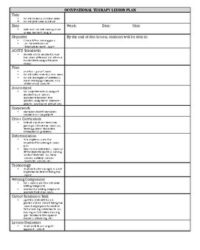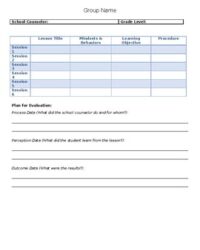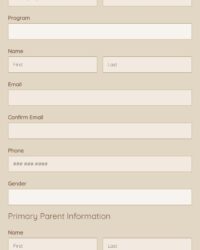Starting a therapy session as a speech-language pathologist can sometimes feel like juggling several balls at once. From managing different client needs to tracking progress and ensuring every minute is productive, it is easy to get overwhelmed. That is where a well-structured approach to planning comes into play, offering a clear roadmap for your therapeutic journey.
Having a go-to speech language pathology lesson plan template can truly transform your practice. It is not just about ticking boxes; it is about creating a consistent, efficient, and highly effective framework that supports both you and your clients. Imagine walking into each session feeling completely prepared, knowing exactly what to do and how to measure its impact. This kind of preparation frees you up to focus on the dynamic interactions that truly make a difference in your clients’ lives.
Why a Structured Lesson Plan is a Game-Changer for SLPs
Every SLP knows the value of organization, but when your caseload is diverse, and each client presents unique challenges, maintaining that organization can be daunting. A structured lesson plan provides a consistent backbone for all your therapeutic endeavors. It helps you articulate your goals clearly, select appropriate activities, and ensures that no important step is missed, fostering a more coherent and impactful therapy experience.
Think about the time you spend daily on preparation. Without a template, you might be recreating the wheel for similar goals or struggling to recall past interventions. A well-designed template streamlines this process significantly. It acts as a mental checklist, prompting you to consider all necessary components and allowing you to adapt proven strategies rather than starting from scratch every time. This efficiency is crucial, giving you more energy to devote to direct client care.
Beyond saving time, structured planning through a template empowers you to tailor therapy more precisely. It forces you to consider individual client profiles, their specific needs, and how current activities align with long-term objectives. This detailed foresight ensures that every session is purposeful and directly contributes to the client’s progress, making therapy truly client-centered and outcomes-driven.
Moreover, having a clear plan documented enhances accountability and facilitates communication. Whether you are collaborating with colleagues, discussing progress with parents, or reporting to supervisors, a detailed lesson plan provides concrete evidence of your professional approach and the therapeutic journey you are guiding your clients through. It demonstrates a commitment to thoughtful, evidence-based practice.
Streamlining Your Workflow
One of the most immediate benefits of embracing a speech language pathology lesson plan template is the dramatic improvement in workflow efficiency. Instead of piecing together session components ad hoc, you can quickly populate pre-defined sections with client-specific information, target goals, materials needed, and data collection methods. This systematic approach reduces cognitive load and ensures a smoother transition between planning and execution.
Imagine the ease of reviewing a previous session’s plan to quickly refresh your memory before starting a new one. This consistency not only saves valuable minutes but also minimizes the chance of forgetting crucial details, ensuring that each session builds logically on the last. It provides a reliable blueprint that evolves with your client’s needs, making your practice more organized and less stressful.
Ensuring Client-Centered Care
While templates bring structure, they are also powerful tools for maintaining a strong focus on individual client needs. A good speech language pathology lesson plan template will include sections that require you to explicitly link activities to specific client goals, rather than just generic therapy tasks. This deliberate connection ensures that every single activity chosen is purposeful and directly contributes to the client’s unique pathway to improvement.
This meticulous planning allows for easier differentiation and scaffolding. You can clearly outline modifications for various skill levels, ensuring that a template supports adaptive therapy that is truly responsive to how your clients are progressing on any given day. It helps you design interventions that are not just effective but also engaging and meaningful for the individual.
Essential Components of an Effective Speech Language Pathology Lesson Plan Template
A truly comprehensive speech language pathology lesson plan template goes beyond just listing activities. It integrates key elements that guide you through every stage of a session, from initial setup to post-session reflection. Understanding these core components is crucial for maximizing the utility of any template you use or create.
These components serve as your checklist, ensuring that you consider all aspects vital for a successful session. From clearly defined goals that are measurable and client-specific to the materials you’ll need, each section plays a critical role in setting the stage for productive therapy. Without these structured elements, even the best intentions might fall short in execution.
The beauty of a well-designed template is its adaptability. While it provides a consistent framework, it also offers flexibility to inject your creativity and respond to the dynamic nature of therapy sessions. It acts as a guide, not a rigid script, allowing you to personalize each plan while maintaining a professional and organized approach.
- Client Information: Space for client name, age, diagnosis, and relevant background notes.
- Date and Session Number: For easy tracking of progress over time.
- Session Goals: Specific, measurable, achievable, relevant, and time-bound (SMART) goals for the session.
- Activities and Procedures: Detailed outline of the tasks, games, or exercises planned, including how they will be implemented.
- Materials Needed: A clear list of all resources, visuals, or tools required.
- Data Collection Method: How you will track client responses and performance during the session.
- Performance Criteria/Target: What constitutes success for each activity or goal.
- Notes/Reflection: Space for observations, challenges encountered, modifications made, and plans for the next session.
- Homework/Carryover Activities: Suggestions for practice outside of the session.
Embracing a systematic approach to session planning can profoundly enhance your effectiveness as an SLP. These structured tools not only streamline your daily operations but also elevate the quality of care you provide, ensuring every moment spent with a client is purposeful and contributes meaningfully to their communication journey. It is about working smarter, not just harder, to achieve the best possible outcomes.
Ultimately, the right planning framework empowers you to navigate the complexities of speech-language pathology with greater confidence and precision. By laying out clear pathways for intervention, you foster an environment where client progress is not just hoped for, but strategically pursued and meticulously documented, paving the way for lasting positive change.


